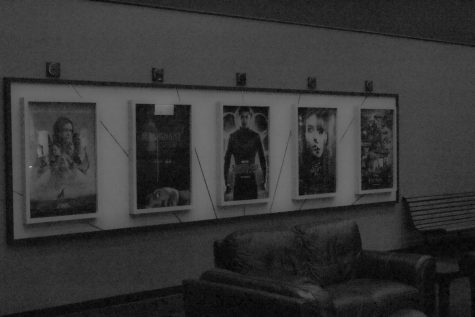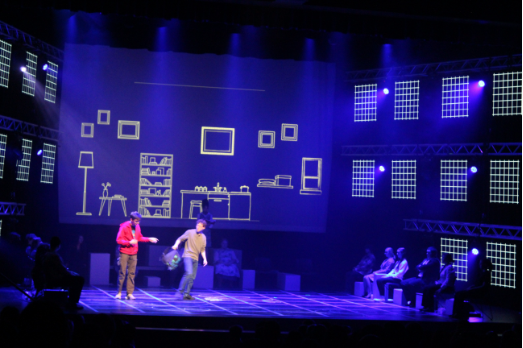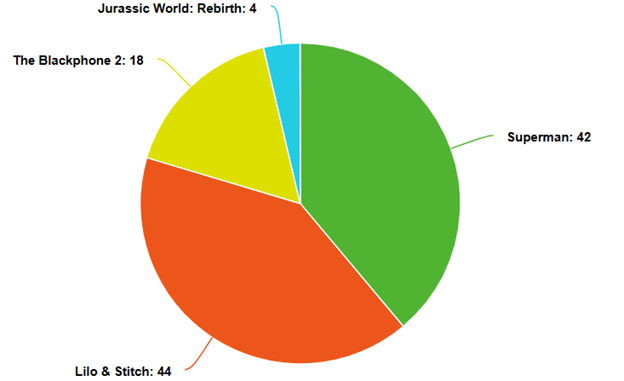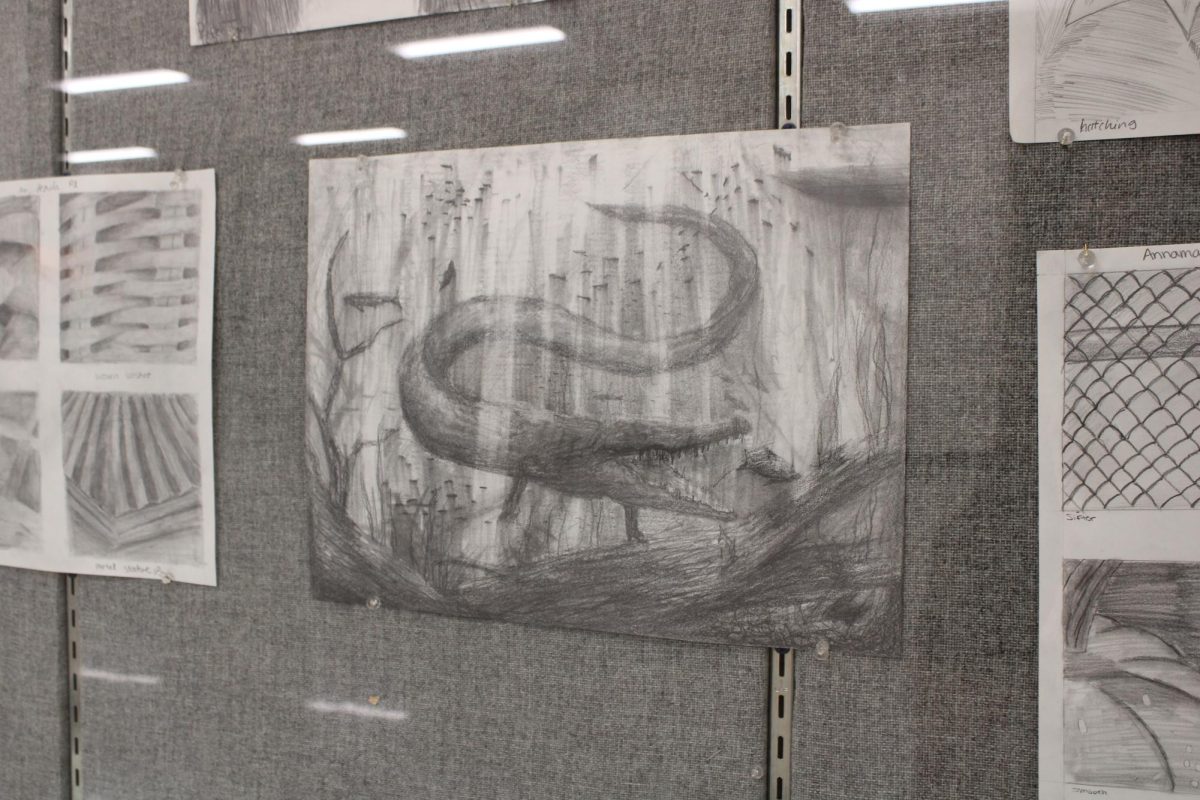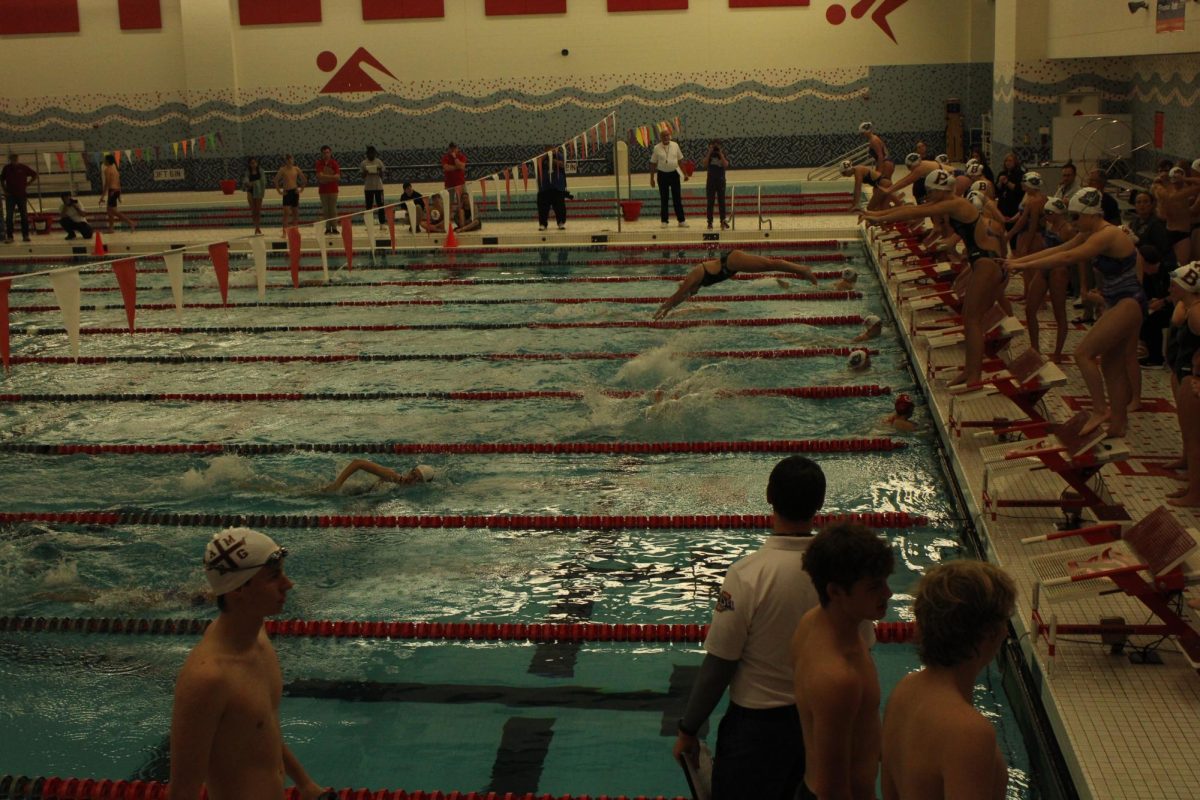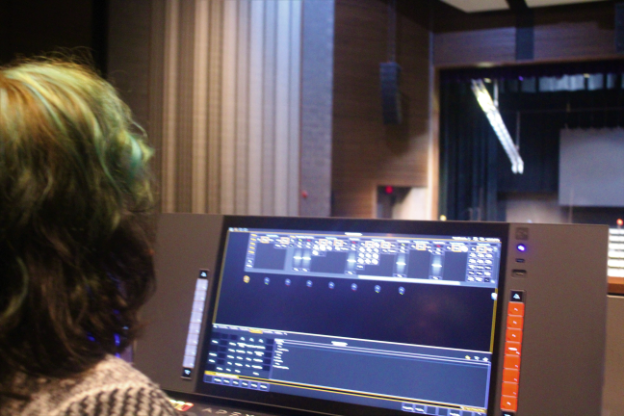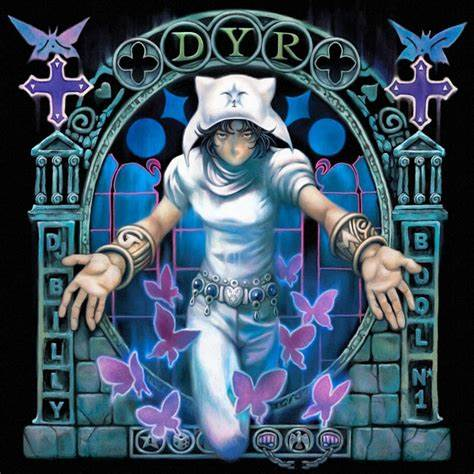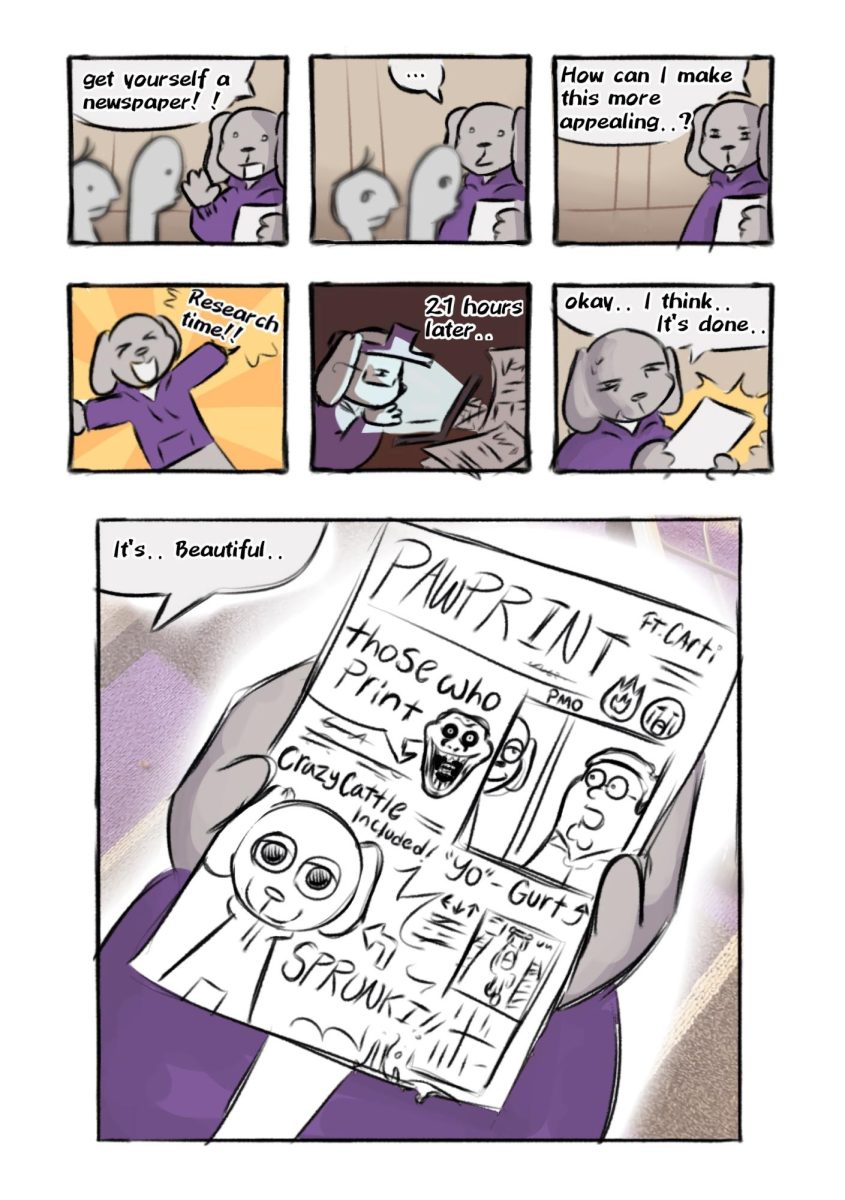“Shang-Chi and the Legend of the Ten Rings” Review: A mix of ninjas, kaiju and the world’s most powerful set of bracelets; A refreshing display of martial arts tainted by our era of special effects
September 10, 2021
A cultural milestone in the current crowning film genre of superhero movies, “Shang-Chi and the Legend of the Ten Rings” is Marvel’s first Asian-lead film in the ever-growing archive that is the MCU. This story pulls a shrouded master of martial arts, Shang-Chi, from his typical mid-20’s lifestyle in San Francisco all the way back to his terrorist father, The Mandarin. Creative fighting set pieces are restrained by the typical CGI elements that come with all superhero movies in the 21st century, making this Marvel project feel like yet another story to be bathed in the typically repetitive formula that is the MCU.
The lead of Shang Chi is played by Simu Liu, known for his role in the Netflix show Kim’s Convenience, which ran from October of 2016 to April of 2021. Other than Liu’s presence in the awarded family comedy, he has made minor waves in the media industry as an actor, martial artist, and stuntman, with his role in the new Marvel release being his biggest acting credit yet.
A supporting cast of Awkwafina, known for movies such as the heartfelt A24 production, The Farewell (2019), Michelle Yoah, known for a string of foreign hits and the recent Asian dominated romance film, Crazy Rich Asians (2018), and Ben Kingsley, who is reprising his role as Trevor Slattery, a.k.a the face of the Mandarin in Iron Man 3 (2013), all aid in the heavy lifting that is making Shang-Chi and his corresponding rings something a little more than a landmark for cultural representation in film.
The big superhero baddie of The Mandarin (the real one this time), Shang-Chi’s father, is played by Tony Leung, who, many may not know, is recognized as one of Asia’s most successful and prominent actors. Paired against the relative amateur of Liu in terms of time in the business, Leung is the driving force behind the events of the story and is a highlight in terms of acting ability, making the Mandarin feel like more than just a one-off supervillain.
As stated, the story of “Shang-Chi and the Legend of the Ten Rings” takes the title character of Shang through his history, being the son to the world’s oldest terrorist and belonging to a rather distorted family of skilled martial artists.
*Spoilers Ahead*
The film opens with some typical Marvel exposition, giving a recall of the Mandarin’s path towards establishing a global terrorist organization called The Ten Rings. This name given in regard to the devices that gave him his power, the rings quickly are given the attention that the film’s title insists on conveying. The two parents of Shang-Chi meet in the hidden land of Ta Lo, through an expedition taken upon by Wenwu (The Mandarin’s true name), who has grown in immense control on a global scale and is in the constant pursuit of ways to further his power.
In a snap forward to the present we open to an awakened Shang-Chi in his San Francisco apartment, heading to his car valet job where we meet his friend Katie, played by Awkwafina. As Shang and Katie are riding a rail bus, the Mandarin’s men get the jump on Shang, leading to the destruction of many vehicles, including the bus, along with the theft of Shang’s green pendant that he has worn around his neck since his mother gave it to him.
In view of the recent attack, Shang comes to question the safety of his younger sister, leading him to venture out in search of her. Katie refuses to stay behind, and both hop on a plane to China, where they find his sister running an underground fight ring. A family reunion quickly surfaces as the Mandarin appears and captures the three.
Soon after, the intent of Shang’s father is made clear as he divulges that his deceased wife is locked behind a sealed gate within her hidden village of Ta Lo. In an attempt to free her, a battle ensues between the Mandarin’s Ten Rings against the village locals. Leading to a kaiju battle, Shang and his father face off, ending with his father’s death along with Shang’s defeat of the beast that the gate had been holding back. After Shang and his sister give a ceremonious goodbye to their parents, they go their separate ways, as Shang and Katie are met by Wong, the secondary sorcerer to Marvels Doctor Strange, to discuss the origins of the rings, and Xialing takes over the role of her father in the Ten Rings organization.
As Marvel’s focus in the past 5 years has been on creating the ending to a story that this universe has been building towards since Iron Man’s first appearance on the big screen, Shang-Chi offers a breath of new, refreshed air for the consumers of Marvel media to intake.
Putting aside the rollercoaster ride that is this movie’s special effects, “Shang-Chi and the Ten Rings” offers a prime display of how captivating scenes can be without being enhanced by the digital elements in superhero movies that we now see so often. With fight choreography that is akin to the style of Jackie Chan and just a dab of Bruce Lee, Simu Liu does his best when he works seamlessly on the spot, notably when he uses the everyday objects in his environment as lethal weapons,
Fight scenes that border those found in “Captain America: The Winter Solider,” a movie noted for its story and action, the peaks in this movie are in its displays of hand-to-hand combat. As an actor who holds a background as both a stuntman and as a martial artist, Liu’s talents thrive in the realm of fighting, with most kicks, flips and punches being performed by Liu himself.
The movie sticks to its strengths in the first half of the film, with Liu’s “Shang-Chi”, and Leung’s “The Mandarin” earning their roles simply through the cohesion that is their fighting styles. As the movie veers into its second half, the heights that were reached in the opening of the film are gradually diminished as more CGI is spewed onto the screen, losing almost all sight of the practicality that had set this origin story apart from all others in Marvel canon.
In the film’s closing 20 minutes, the audience is given a battle between two colossal beasts, both whom could match the likes of monsters found in the Godzilla universe. A battle that invokes elements of a videogame, with minions and all, one can see where most of the money for this movie went. The potential to put in place an even more entertaining fight between The Mandarin and Shang-Chi is one that was never reached and will likely never be touched again, given the death of Wenwu via soul suckage.
Other then the action side of the film, no performances seem to standout through the runtime, with the supporting cast doing a fair job at maintaining the tone of a ninja movie within the toybox that is Marvel. As most superhero movies go, acting holds second tier to the prime focus that is making a movie with action sequences and cool effects. This second-fiddle dynamic adds to the excessive churning that is Marvel movies to date, with seemingly 1/5 products being certified classics, and the leftovers being decent to good adaptations of acclaimed comic book heroes and heroines. Shang-Chi seems to fall in this majority, with some elements that give it the one up in relation to the rest of the pack, and others that leave it trailing behind the rest.
The story of Shang-Chi is an inventive one, being the first origin story post “Endgame” that holds no ties to any upcoming cataclysmic events, at least for the near future. A film that collapses upon itself by stretching its hand too deep into the pot that is modern animation. One must value how decisive some fight scenes were, hopefully being a trait of Shang-Chi’s character that follows him wherever he ends up in the MCU, with his newly acquired rings adding a new perk to the skills of the Master of Martial arts.
As Marvel begins to move in the mutiversal route, “Shang-Chi and the Legend of the Ten Rings” is a nice strip of superhero chewing gum to chomp on for the meantime, prior to whatever Marvel has planned in its upcoming Spiderman flick.
An event in movie history that strikes a checkmark clean through the once open box that was Asian representation in the superhero genre, Shang-Chi’s choreography adds a little flare to this film milestone. A story that will keep you talking about a likeable character, with likeable traits, and a promising future, “Shang Chi and the Legend of the Ten Rings” is worth the watch, as long as you’re willing to survive a bombardment of CGI to earn the payoff of cool, on-the-move, fighting set pieces.
